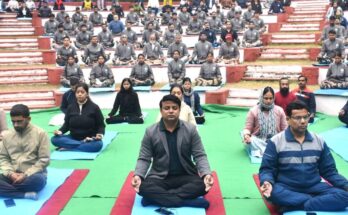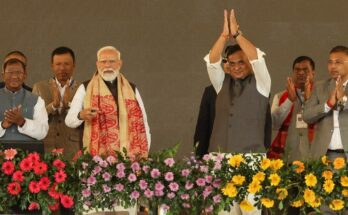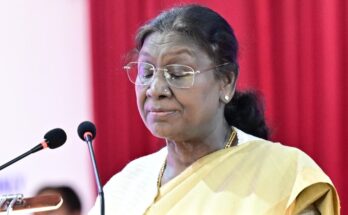By Suresh Nautiyal
In 2015, world leaders adopted a document — 2030 Agenda for Sustainable Development — that aims to end poverty, tackle inequalities and combat climate change; however, the governments, civil society, scientists, academia and the private sector need to come together to achieve the Sustainable Development Goals (SDGs).
The SDGs are a collection of 17 global goals set by the United Nations General Assembly for the year 2030. Ther are part of Resolution 70/1 of the United Nations General Assembly, the 2030 Agenda. They are: (1) No Poverty, (2) Zero Hunger, (3)Good Health and Well-being, (4) Quality Education, (5) Gender Equality, (6) Clean Water and Sanitation, (7) Affordable and Clean Energy, (8) Decent Work and Economic Growth, (9) Industry, Innovation, and Infrastructure, (10) Reducing Inequality, (11) Sustainable Cities and Communities, (12) Responsible Consumption and Production, (13) Climate Action, (14) Life Below Water, (15) Life On Land, (16) Peace, Justice, and Strong Institutions, and (17) Partnerships for the Goals.
The goals are broad-based and interdependent. The 17 SDGs have a list of targets that are measured with indicators.
However, SDG 17 cuts across all the other goals and includes 19 targets that span finance, technology, capacity-building, trade and systemic issues, which focus on policy and institutional coherence. It seeks to strengthen global partnerships to support and achieve the ambitious targets of the 2030 Agenda, bringing together national governments, the international community, civil society, the private sector and other actors.
That sounds ambitious?
It is, and the UN has said that the world should be doing better. “Despite some advances in certain areas in 2017, more needs to be done to accelerate progress. All stakeholders will have to intensify and focus their efforts on the areas where progress has been slow,” the UN Secretary-General António Guterres wrote in a recent report.
The UN has also emphasised that countries should focus on partnership efforts that support the SDGs and which help to fill existing gaps in SDG implementation, be it ensuring that all girls and boys complete free, equitable and quality primary and secondary education, or that all forms of discrimination against all women and girls are ended.
So, what does this mean in practice?
It means a lot of work going on behind the scenes, which, while not necessarily headline-grabbing, could have a profound effect on positive progress towards the goals. For example, measures to improve the capacity of national governments for tax and other revenue collection means those governments should have more money to spend on providing basic services like health and education.
Partnerships to boost communications technology should result in more people in developing countries getting access to the internet. And working to “significantly increase the exports of developing countries, in particular with a view to doubling the least developed countries’ share of global exports by 2020”, as the goal explains, should bring more prosperity to some of the world’s poorest countries.”
The sharing of expertise and knowledge, including data, is also highlighted in SDG 17.
In June 2019, the United Nations specialised agency for information and communication technologies, the International Telecommunication Union (ITU), launched a partnership to collect and provide data on electronic waste (for example, discarded television sets, mobile phones and computers and end-of-life batteries) which it describes as “the fastest growing part of the world’s domestic waste stream.” The idea is to use the data to help track progress towards global e-waste legislation and recycling goals.
How does this impact individuals?
The UN believes, “we are all in this together”, and that “change begins with you”, and encourages individuals to get involved in the SDGs generally by making small changes to their lifestyles, for example turning off lights to save electricity. On a partnerships level it suggests engaging, or partnering, with local and national authorities to participate in initiatives that don’t harm people or the planet.
And the UN suggests mentoring young people at work, adding that “it’s a thoughtful, inspiring and a powerful way to guide someone towards a better future.” The UN has even produced a guide showing how “lazy people” can get involved.
Aren’t partnerships already happening?
Yes, the United Nations has always worked in partnership with national governments, development partners, civil society, and the corporate world, as well as individuals, and SDG 17 is all about strengthening those partnerships and making sure they are more productive in terms of reaching the ambitious targets set out in the 16 other goals. (UNI)




